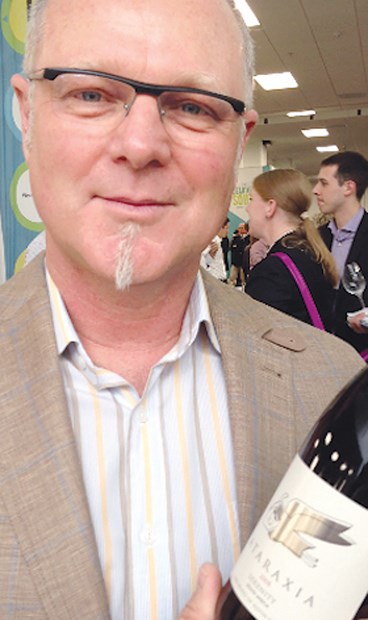What's in a blend? Why worry? One of the many interesting people I met at Beautiful South in London last week was winemaker Kevin Grant. He and his wife Hanli own Ataraxia in Hemel-en-Aarde Valley, the stunningly beautiful, coastal region whose name kept popping up during the twoday tasting.
Kevin cut his teeth at nearby celebrated Hamilton Russell before establishing Ataraxia, where they focus very much on terroir and varieties suited to the cool climate setting. (Last week I gave serious props to Ataraxia Chardonnay, 91 points.) As Kevin poured me his 2008 Serenity red blend (not yet in B.C.), he joked that nobody knows the blend, not even his wife. And he's not about to spill the beans now.
The actual make up of the wine varies from year to year, so it doesn't help. Even if you are a certified member of WineGeeksRUs, chances are you won't be able to nail down the varieties anyway.
I have a vague idea what might be in there. But it really doesn't matter.
And, besides, I like his poetry.
Kevin says, "It seeks to be a wine that whispers, rather than shouts, a wine that will subtly occupy all corners of your palate."
He says he only uses the cultivars that respond best to the climatic conditions and weather dealt that year, which is why he's the winemaker and not you or I. "It simply remains a secret blend. We've never divulged what it is: It's simply not important," he says.
And here's why. "Blends are all about style, not about construction, cultivars or even percentages. Much more about style. That's the original raison d'etre for blends," he says.
"It's a wine that evolves in the bottle or glass as you linger over it at dinner or a barbecue. It's really (more) about style than it is about cultivar makeup."
His words rang true with me because, especially in North America, we've been raised on the varietal label so much so that not only does it dictate almost entirely how wine is marketed and stocked at the store, but it's become an unhealthy preoccupation.
After all, what is wine if it's not, first and foremost, about the place it comes from and the people who make it? Think terroir, in every aspect.
While you might have to wait a while to taste Kevin's wine in B.C., here are a couple of other worthy blends that you can track down.
Glen Carlou Grand Classique 2009
Arguably one of the best-value Bordeaux style blends on liquor store shelves (and, yes, you can easily find the Cabernet dominated breakdown), here's a drop that's perfect for pairing with fall-inspired stews and serious steaks. Up front red and black fruit with cocoa and mocha notes, with a touch of spice, wrapped in easy tannins (BCLS $20.99, 90 points).
De Martino Las Cruces Old Vines 2010 (Cachapoal)
From one of the country's most dynamic producers, this wine is emblematic of the "new" Chile but from an older vineyard planted primarily to Malbec with Carmenere, some Cab. Sauv, and a few more things. The wine is the sum of its bush vine parts, rewarding with a rich and textured palate of damson and chewy chocolate notes with wellbalanced fruit and oak. Private stores ($50, 91 points).
Tim Pawsey covers food and wine for numerous publications and online at hiredbelly.com. Contact: Twitter @hiredbelly or email [email protected].



